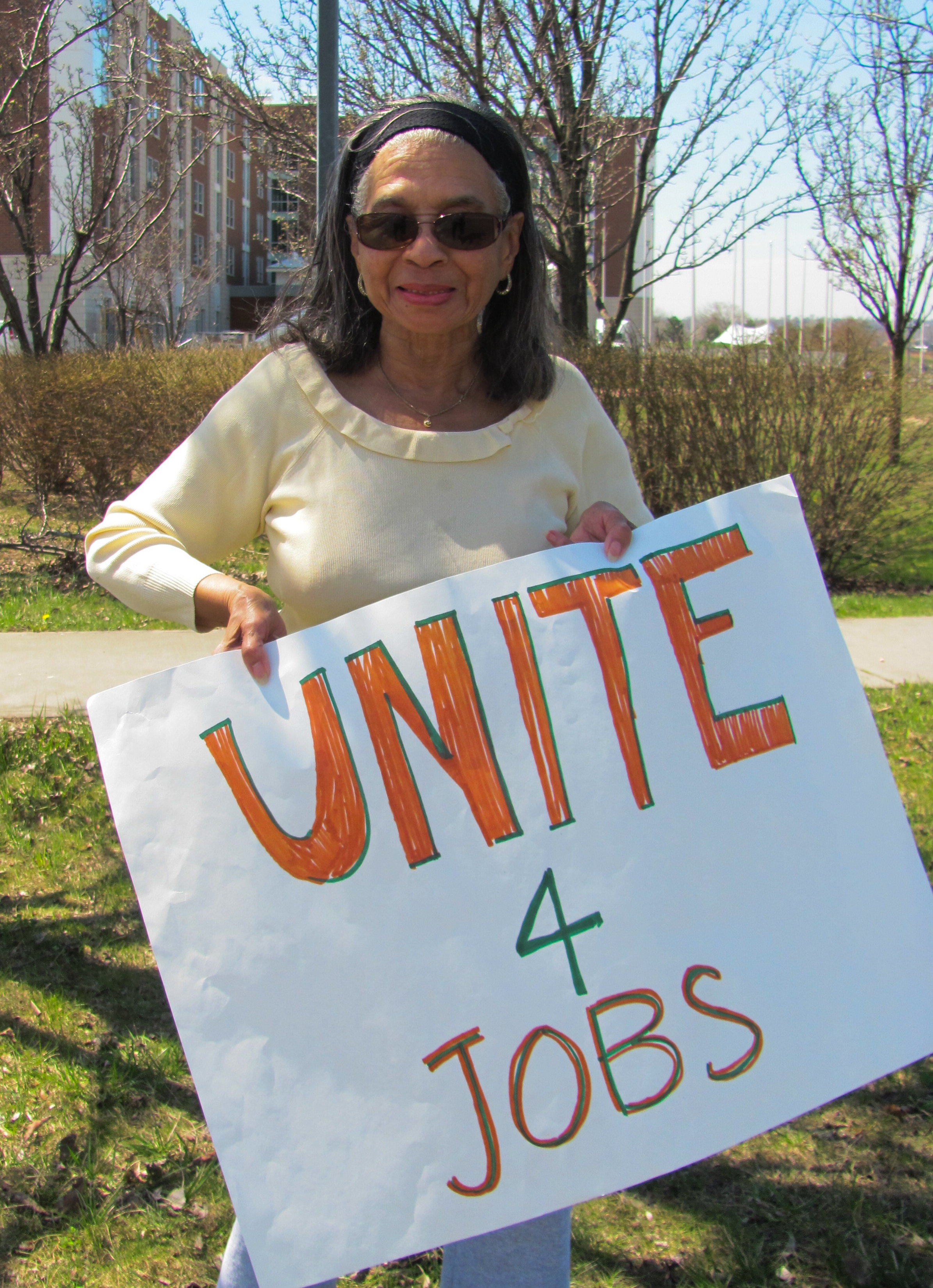
For four years the Urban Jobs Task Force (UJTF) has been fighting for jobs for Syracuse city residents and contracts for minority and women-owned enterprises (M/WBEs) whenever local projects receive public money or tax breaks. Syracuse’s poverty drives this advocacy. Recently, a national study reported that Syracuse is Number 1 (out of the 100 largest US cities) in concentrated poverty for Blacks and Latinos and Number 5 in concentrated poverty for whites. The report’s findings are not a surprise to residents of the city’s distressed neighborhoods because daily they live with quality of life issues. For many the answer is jobs because so much is tied to economic power. The Partnership for Onondaga Creek, a founding member of the UJTF, felt that if Syracuse’s Southwest side had been a middle-class neighborhood, the county would not have built the undesirable Midland Avenue sewage plant in its midst.
At the end of 2011, just as the UJTF was forming, the city selected the Fayetteville-based COR Development Company to create a residential, hotel, retail and educational center in Syracuse’s Inner Harbor. The UJTF decided that this ten-year, $350 million project should have a legally-binding Community Benefits Agreement (CBA) attached to it because any tax benefit package given to COR would affect delivery of services in the poorer city neighborhoods due to a diminished city tax base. Generally, CBAs provide benefits as defined by the community, such as good jobs and apprenticeships, contracts, affordable housing, greenspace and grocery stores. Just as the developer applies for tax benefit packages which might vary from a hundred thousand dollars to, as in the case of Destiny USA, $700 million, city neighborhoods through a CBA should be able to secure direct benefits from those large projects that will negatively affect their services.
In 2013 the UJTF, with the help of Syracuse University’s Community Development Law Clinic, developed a CBA to negotiate with COR, asking for a 25% hiring goal for low-income city and county residents, and that 20% of the contracting dollars go to M/WBEs. COR would also provide funding for an independent compliance monitor and $2 million for apprenticeship training. COR refused to have a conversation with us saying, through the media, it was working with the SUNY Educational Opportunity Center to identify local workers for the project. The agreement between COR and SUNY-EOC is a poor substitute for a CBA because it contains no enforceable hiring or contracting goals.
The positive from that experience was that we had learned how to draft a CBA, modeling it on other CBAs around the country. Then in 2014, two UJTF members attended a national conference where we met a City of Cleveland official who told us how Cleveland promotes CBAs on large projects and requires contractors awarded city projects to hire 20% Cleveland residents. Taking notes from Cleveland, the UJTF urged Syracuse’s Joint School Construction Board (JSCB) to add a residency requirement to its own workforce diversification plan of 10% minority and 10% women for its $300 million city school renovation project. After a public hearing, the JSCB added a 20% city residency requirement.
Building on that success, the UJTF worked with Common Councilor Bey and SU’s Community Development Law Clinic to draft a Syracuse Resident Employment Ordinance modeled in part on Cleveland’s law. In Summer 2015, we collected over 1,500 signatures from city residents urging the mayor and Common Councilors to support this legislation. Currently, the city’s lawyer is preparing the ordinance for the Common Council’s consideration and vote, which we hope will happen before the end of May.
In November 2015, COR, the Inner Harbor developer who had been working with the city’s Industrial Development Agency (SIDA) during phase one of the project and had refused to speak with us, decided to apply to the county’s Industrial Development Agency (OCIDA) for the rest of the project. For phase one, SIDA had given COR sales and mortgage recording tax exemptions but not a property tax exemption (which could have been difficult to get because under SIDA’s rules, all property tax exemptions must also be approved by the Common Council). Wanting a no-hassle deal, COR applied for a $44 million tax benefit package for the rest of its Inner Harbor development from OCIDA, most of that being a property tax exemption.
We believe that it is fundamentally wrong for OCIDA to accept tax exemption applications for city development projects because these projects should be going to SIDA for consideration. That said, the UJTF would also like to see CBAs on large development projects getting tax benefits or using public funds. We gave both county legislative chair Ryan McMahon and County Executive Joanie Mahoney our original CBA for the Inner Harbor project; to our disappointment, in December, OCIDA not only approved the $44 million tax benefit package, but also did so without any enforceable workforce goals for city residents. Currently, the UJTF has monthly demonstrations at the Inner Harbor protesting this tax deal, asking “Where are the City Jobs?”
It is time to speak up! Join us for this protest on the third Thursday of every month or consider joining the Urban Jobs Task Force. Organizations as well as individuals can join. We have four quarterly general membership meetings with most work done by the policy, community outreach and projects committees. To learn more, call Aggie at 315-478-4571. Check out our Facebook page: www.facebook.com/SyracuseUrbanJobs and our website www.ujtf.org.





